Retail is evolving to focus on a product-driven customer experience. Read it here first.
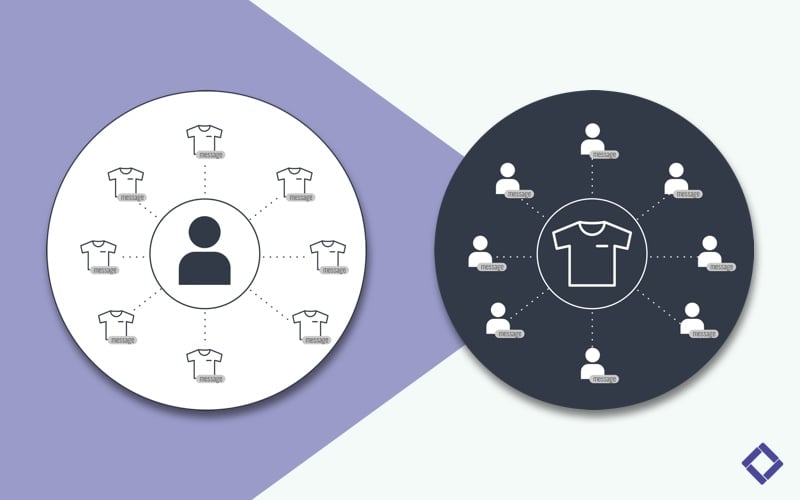
Retail is evolving to focus on a product-driven customer experience. Read it here first.
The product-centric vs. customer-centric approach in retail has been constantly evolving. To exemplify this, I'm going to tell you a story.
This is a story about a fridge.
Before you think “boring” and move on, I should warn you that this particular fridge has had a pretty exciting life...
When the fridge was young, it was sold for its functional qualities;
“Buy this new fridge because it’s extra-large!”
But nobody liked the fridge for what it truly represented. Cue violin.
Then came the dawn of the digital age. The “experience economy”. Cue cyberpunk, techno?
The fridge-makers saw an opportunity to upgrade. They built-in an ice-maker. (N)ice, (N)ice, Baby. They added eco-friendly lights. Integrated a child-lock.
The fridge was now sold for what these qualities represented to the customer;
“Extra-large space for your extra-large family! The one thing that keeps constant and cool during family fights, get-togethers, and dinners!”
What did the fridge now mean to people?
It was a climate-friendly-family-friend. What a journey.
What happened was a shift from “product-centric” to “customer-centric”.
Before you panic, this article will define these terms in full. Then, I hope to show you why the fridge’s story is an important one - it removes the dichotomy in product-centric vs. customer-centric. Towards something akin to empathy marketing.
This is important because the intersection of product and customer-centricity is how you’ll become more relevant in this customer-centric digital age.
Told you it was exciting.
 Product-Centric
Product-Centric
Firstly, the product-centric approach is when a product is sold to the market based on its features.
So back when our fridge was in its youth, marketers would sell the product based on its defining characteristics, without taking into account why these were important to the people who bought the fridge in the first place.
That all changed, however, as marketers moved from product-centric to customer-centric.
 Customer-centric
Customer-centric
The customer-centric approach is when products are marketed in a way that resonates with the needs of the customer.
Peter Fader suggests that,
“Customer centricity is a strategy to fundamentally align a company’s products and services with the wants and needs of its most valuable customers”
While we believe that customer-centricity means aligning with all your customers (since everyone is valuable), Fader is right in that customer-centricity means starting with the customer and working backward. This is something Amazon has long been championing, with the mission of becoming the “Earth’s Most Customer-Centric Company”.
To understand what’s important to your customers you need to, therefore:
And for more mature marketing:
Segment your customers based on their psychographic profiles
This kind of marketing is an evolution. We weren’t always smart enough to understand that to sell products, we had to sell experiences. Just like our friend the fridge, the product-centric approach dominated marketing for a long time.
Let me give you a few examples.
If you’re a woman living in the 21st century you should thank the stars that fashion is now prioritizing comfort rather than ridiculous body shapes - I know I do, every day.
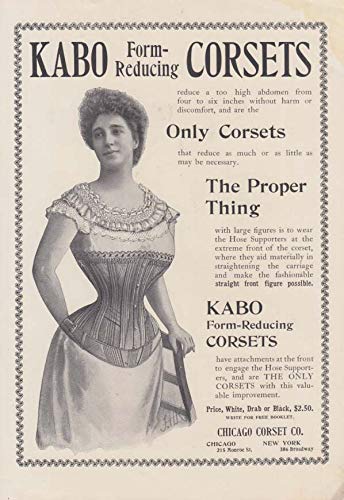
I mean, just look at this corset ad from 1900.
Marketing the corset back then was product-centric because it totally obfuscated the woman’s comfort. The ad above highlights how the material support will “reduce the abdomen”. Gives me the shivers.
In 2019, body-hugging garments were marketed as “shapewear”. And shapewear was the most trending product niche of 2019, according to Shopify.

So what happens is that the same product is marketed in line with the emotions and desires of the customer - “your secret is safe with us”.
Rather than showing how to wear the product as the 1900s does above, marketers now talk about how the product will benefit the life of the customer - and not cause bodily abnormalities for the sake of appearance.
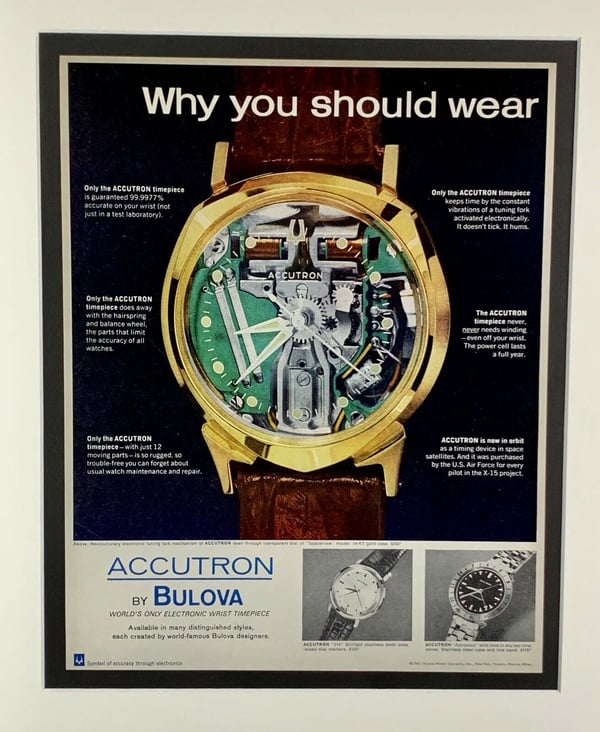
Another product that has moved from product-centric to customer-centric over time is the watch. If you look at this Accutron ad from 1966, you can see how they highlight every single innovation that is a functional quality of the product.
Which is great, but says nothing about what kind of person would actually wear it.
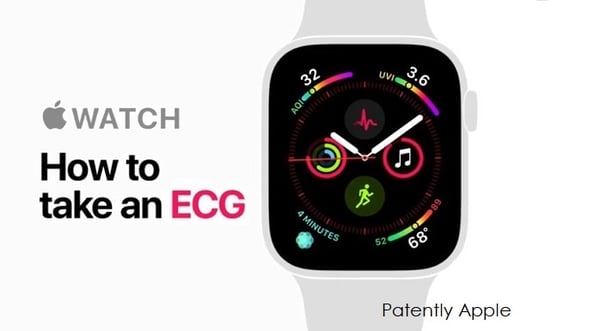
In 2019, Apple released its Patently Apple watch. 50 years after Accutron and watches save lives. Sure, this evolution shows off the exponential rise of technology. But it also shows a dramatic shift in the language of marketers from product-centric to customer-centric.
If we were still marketing to a product-centric culture, then this ad would go very differently: Apple would highlight all the technical ins and outs of the watch much like the 1966 ad does above.
And, honestly, wouldn’t that just come across as pretentious? We get it Apple, you guys are smart, and so are your watches.
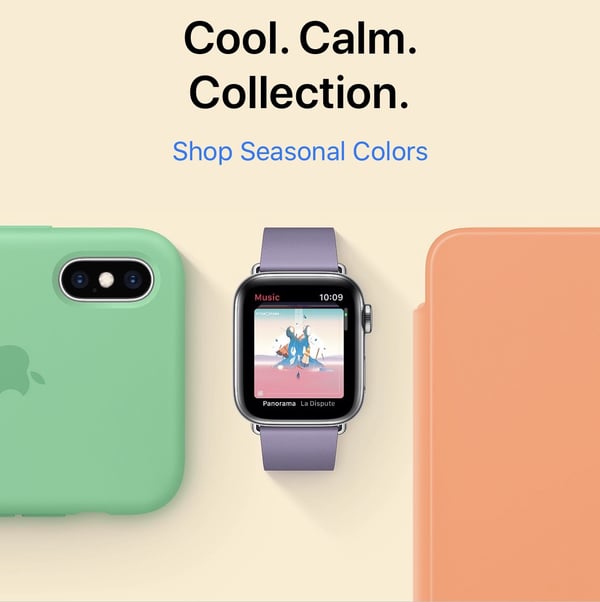
Instead, what we see is a customer-centric approach that prioritizes the health, wellness, and convenience of the customer over demonstrating the product’s technical attributes.
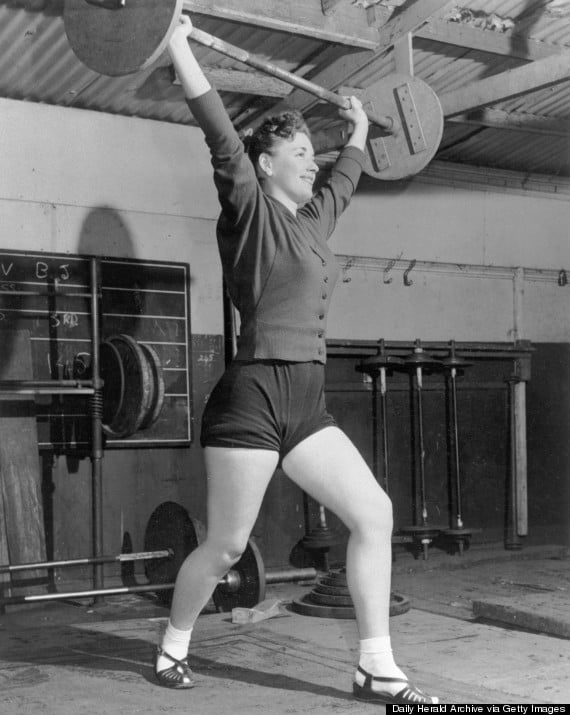
We see a similar evolution of sports clothing: from product-centric, e.g. selling petticoats and sandals for weightlifting (I have so many questions about this), to customer-centric, e.g. the trend of athleisure and its exponential rise in recent years as shown in the graph below.
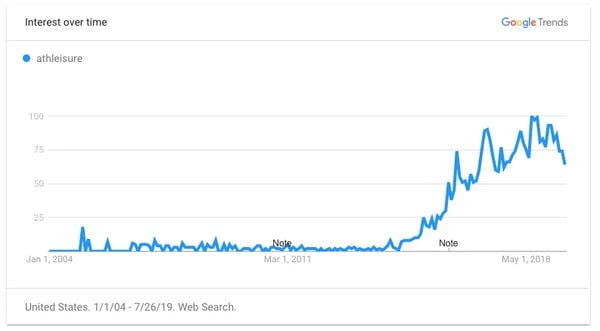
Athleisure basically prioritizes a person’s comfort over fashion (although leave it up to 1956 to show that socks with sandals are fashionable). Athleisure is also a customer-centric way sportswear is being sold because it’s a trend - meaning customers love it. So much so that even non-traditional sports retailers have capitalized on it, like H&M:
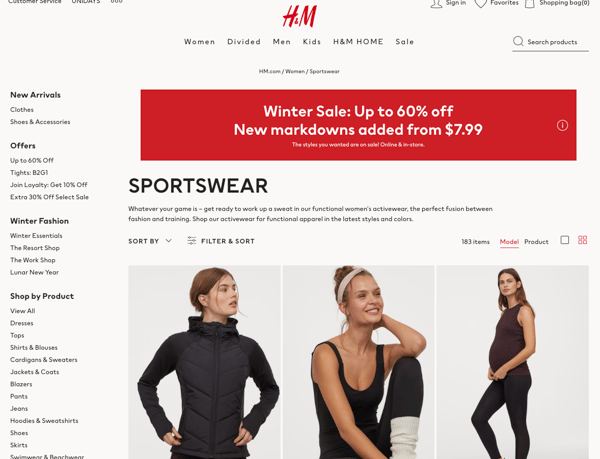
These three examples of the product-centric vs. customer-centric in retail are in fact the top trending fashion niches of 2019: shapewear, smartwatches, and athleisure. Each demonstrates a move from marketing the product to marketing for the customer.
(By the way, other trending product niches of 2019 were things like posture correctors, cat beds, and toilet stools. Not sure what this means for the evolution of our shopping behavior, but that’s for another post).
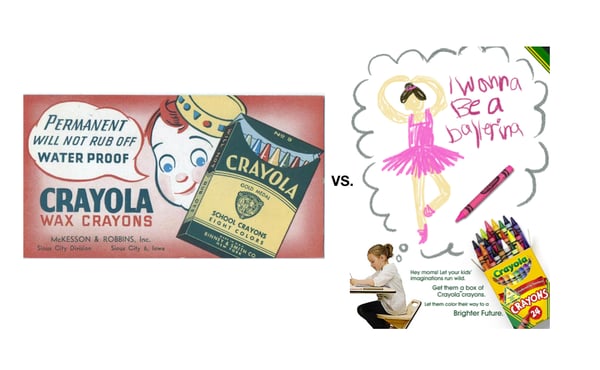
Crayola marketing over time from product-centric to customer-centric
What we’ve discussed can be attributed to an evolution in marketing. So what comes next?
There is a new age upon us, but one that is already happening on the subtle peripheries of eCommerce. This is the intersection of both the product-centric and customer-centric approach.
In Mark Hocknell’s blog, he says that product-centric and customer-centric are a “dichotomy of opposing ideas”. This article says much of the same.
We think there shouldn’t be an opposition.
Product centric vs. customer-centric is an age-old way of thinking about selling products. By removing this belief in one versus another, you can do more with both your customer and product data.
Doing more with your product data will, of course, start online. But you can just as easily use this data across all your channels and in-store.
For eCommerce, bringing together the concepts of product and customer-centricity will define the way forward for customer intelligence. What we’ll begin to see is a feedback loop where the way customers interact with products will be used to enhance their data profiles, which will eventually lead to better triggers for personalization efforts.
There are two crucial reasons in favor of this new direction:
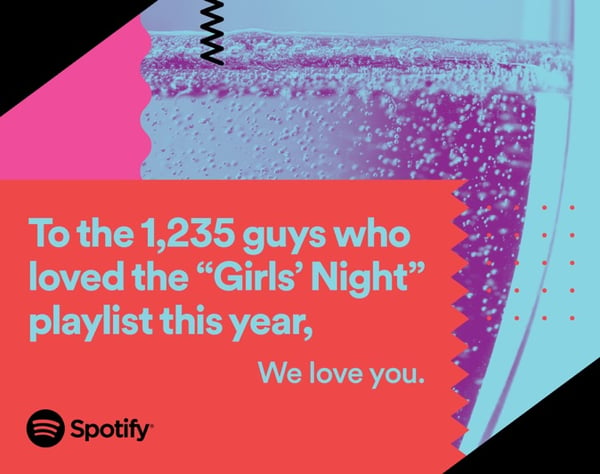 This 2016 campaign by Spotify is a great example of the feedback loop between product (the Spotify app) informing a customer-centric ad. Yet, some people viewed Spotify as misusing customer data by releasing it to the public.
This 2016 campaign by Spotify is a great example of the feedback loop between product (the Spotify app) informing a customer-centric ad. Yet, some people viewed Spotify as misusing customer data by releasing it to the public.
We all know that due to recent scandals, customer data is becoming more and more protected. The GDPR in Europe already creates protective barriers to a browser’s data like cookie consent or boxes checking sensitive data. National legislation will soon get on board too, as predicted by Inmoment (in 2018).
That being said, the safest way to continue to collect data to optimize your webshops and personalize the CX is to shift the focus to your products and what your customers love about them. This is your data feedback loop in action.
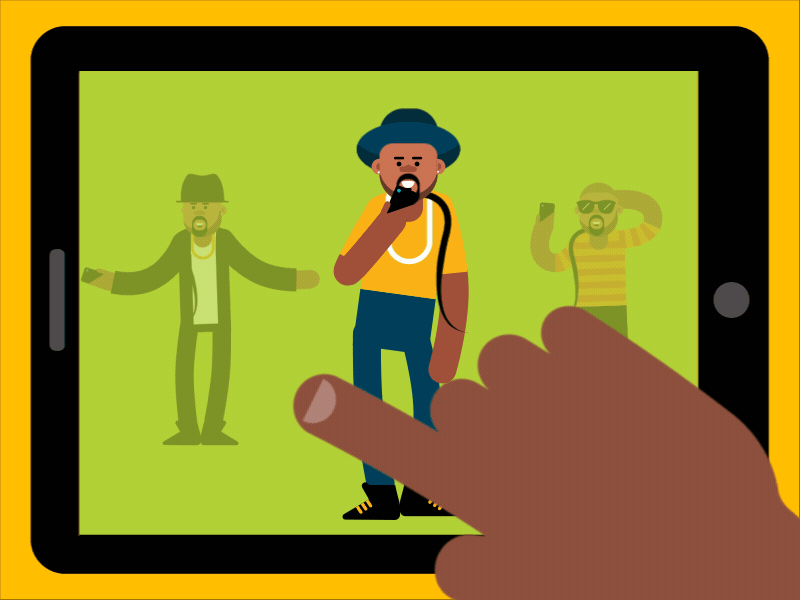
Another reason for synthesizing the product-centric vs. customer-centric approaches is due to the sheer amount of choice that exists in the market. Consumers have a vast array of product assortments at the tip of their fingertips, which means they can shop for anything, anywhere, and at any time.
So how do you stand out?
This means that you’ll need to market smarter. And one way to do this is by personalizing your products to individual shoppers so that your products become more relevant.
It’s about leveraging data for customer-centric product experiences that foster more meaningful experiences with your brand. Creating insights that drive purchase behavior from product data is something we call “product intelligence”, and is why the intersection of product and customer-centric is so important.
Product intelligence for eCommerce means:
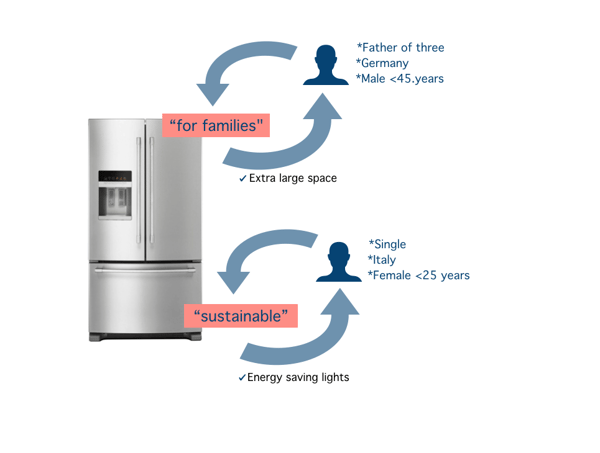
Product Intelligence: what product attributes your customers respond too will say a lot about who they are as people, helping you to optimize what you (in turn) say about your products.
Product intelligence is what you make out of the data from marketing customer-centric products. This new way forward replaces the dichotomy with a dynamic feedback loop. It’s a crucial reason for bringing together the concepts of product and customer-centricity.
Let’s have a look at how retailers are doing it today.
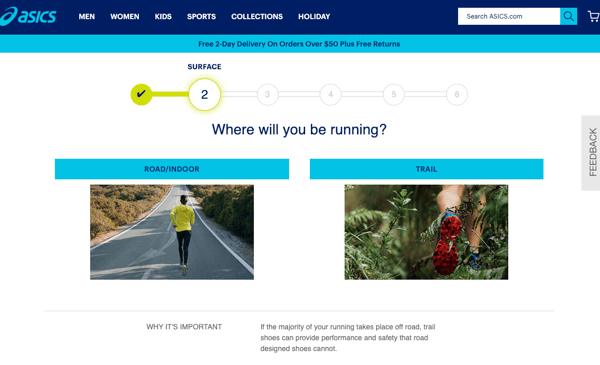
In practice, product intelligence will help optimize your entire supply chain. It supplies CDPs and PIMs with relevant product information, whilst saying something about who your customers are as people.
Take Asics’ Shoe Finder. This is basically a shopping wizard that helps customers find the perfect shoe for their running needs.
However, what the Shoe Finder also does is use the product data from the quiz to tailor the shopping experience to the individual customer who plugged in their preferred options.
So Asics can further recommend trail running shoes in email campaigns or product recommendations, offering relevant tips and tricks related to their customers' running goals. This supports the overall CX.
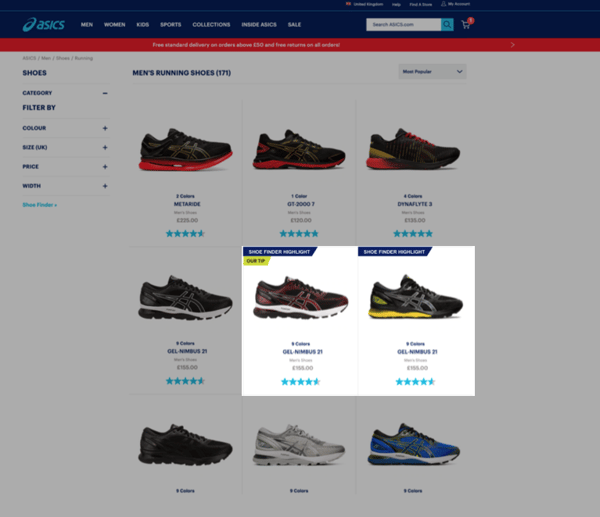
They go one step further and use this information for on-site retargeting, hyper-personalizing the PLP for the visiting customer. What customers will see is the product label “Shoe Finder Highlight”, nudging customers towards an option that was curated for them with data from the quiz.
This is a good example of product intelligence, or, using product insights in an actionable and transparent way that ultimately:
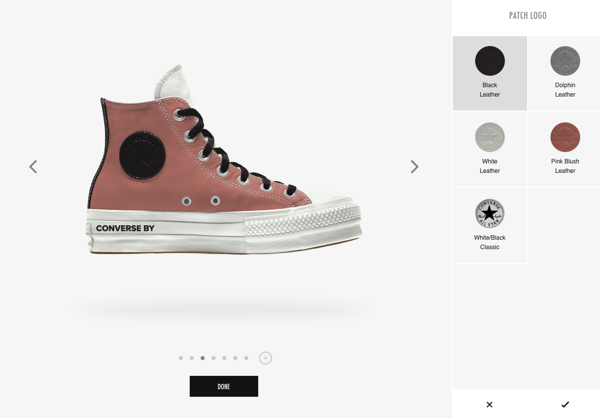
Alternatively, Converse uses product intelligence to understand what appeals to their customers. By allowing you to “customize” your shoe, they can understand what different visiting segments love about the product.
Is it the traditional high-top? The logo? The stripe on the heel? Or maybe customers like to reinvent tradition by choosing funky colors.
Whatever the customer decides as they customize the shoe will be relevant information about who their customers are as shoppers and people.
With this in mind, Converse can also provide dynamic product recommendations based on what their customers have chosen on the “customize” page:
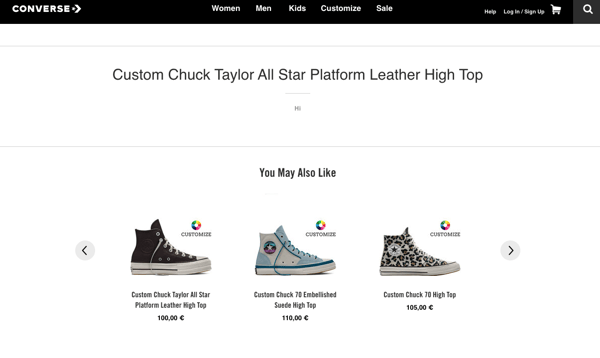
Extra tip: unsiloing this data can be beneficial not just for marketers but for merchandising departments when thinking about ways to innovate for future lines.
Whilst this kind of product data can be used pretty well for on-site targeting, product intelligence is a great way to inform or optimize your omnichannel marketing campaigns in general.
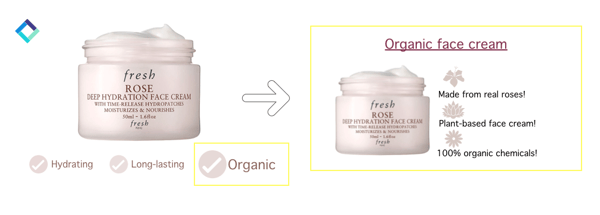
For example, let’s say you're selling face cream. With the help of your data-savvy friends (that’s us!), you run experiments using different product badges that describe different attributes of the face cream like that it’s organic, hydrating, or long-lasting.
By testing these attributes with Dynamic Badges we can determine which variant will drive purchase behavior the most on your webshop, and for who (i.e., which segments).
For example, imagine that our data reveals that women in the Netherlands above thirty coming from Facebook buy your face cream because of its organic attribute.
With this knowledge, we can then construct a whole data-driven ad campaign that highlights the organic feature of the face-cream, and deliver this as a personalized ad to your Dutch female segment above thirty.
This is a product-centric approach to more customer-centric marketing.
Another case study that uses product intelligence is by the eCommerce tool YotPo. YotPo provides the retailer Greats with a review and rating box that customers can fill out when they purchase a sneaker.
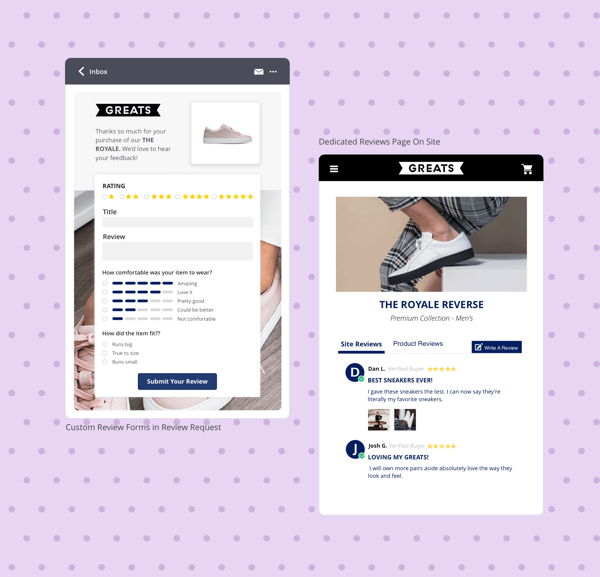 Source: Yotpo
Source: Yotpo
The ratings ask about the sneakers’ attributes such as comfort and sizing. While reviews also give information to other shoppers (leveraging Social Proof), Greats is additionally able to collect information on what their customers like or dislike about their products.
This “customer feedback loop” uses product intelligence because it’s able to segment different customers based on their ratings and reviews, and deliver them more personalized retargeting post-purchase.
So for their email campaign below, Greats highlights the sneakers as a luxury item, with “cotton laces”, “leather lining”, and “durable construction”: product attributes that, I can imagine, have been tested and chosen in relation to what appeals to their customers.
 Source: Campaign Monitor
Source: Campaign Monitor
These examples show just a glimpse of how you can use product intelligence. But you have to be creative about product-data, whilst keeping your customers’ needs, desires, and personalities in mind at all times, and staying transparent with your data-use.
Here’s what we’ve covered throughout this article:
No, but seriously:
By using product intelligence in these creative ways, retailers can find a product-to-customer fit that revolutionizes the traditional product/market fit paradigm.
In the future, retail will be about constant innovation, making traditional marketing data-driven, and breaking down dichotomies for a cohesive, unsiloed approach.
Don’t you want to get started early to get ahead of the curve?